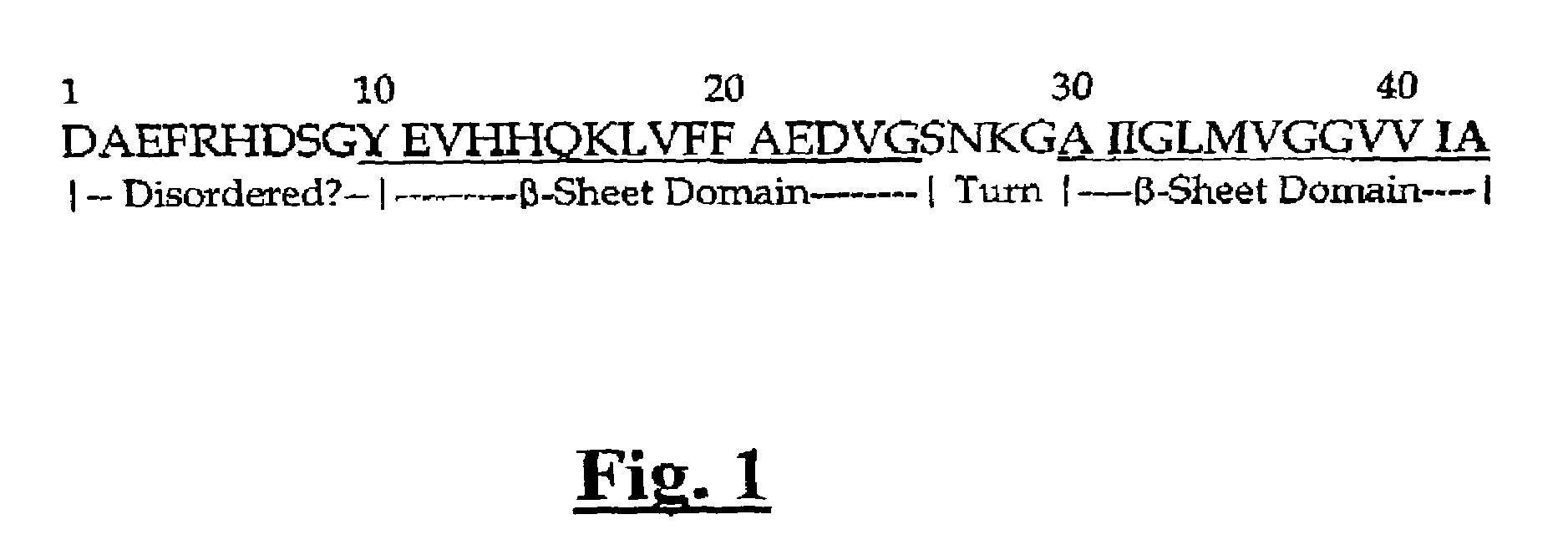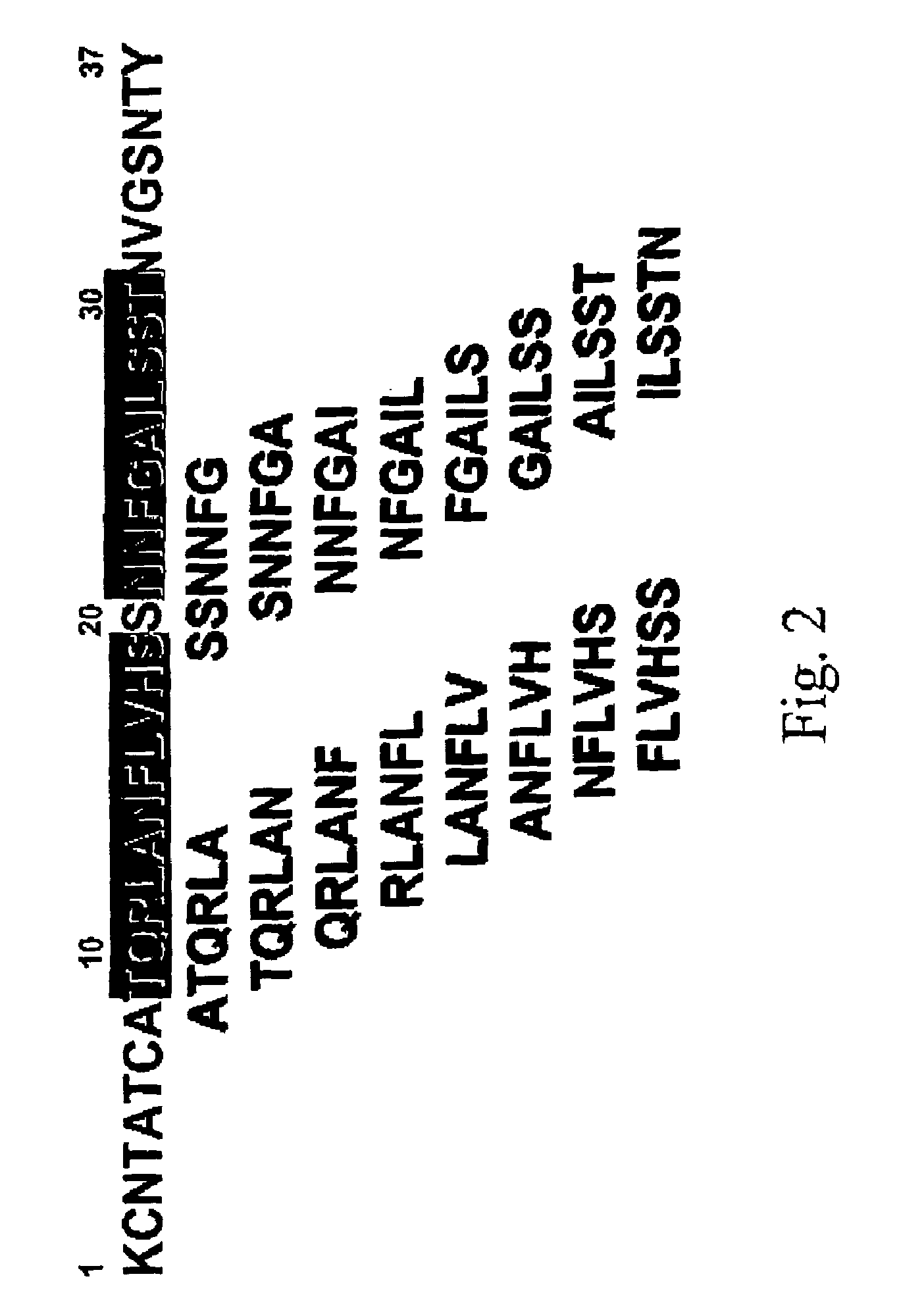Inhibitors of IAPP fibril formation and uses thereof
a technology of fibril and inhibitors, which is applied in the direction of antibody ingredients, carrier-bound/immobilised peptides, peptide sources, etc., can solve the problems of inability to prevent or cure disease, inability to significantly dissolve the deposits in situ, and toxic to surrounding cells, so as to prevent or inhibit the formation of fibrils, prevent or delay the effect of progression
- Summary
- Abstract
- Description
- Claims
- Application Information
AI Technical Summary
Benefits of technology
Problems solved by technology
Method used
Image
Examples
Embodiment Construction
[0063]For the purpose of the present disclosure, the following terms are defined below.
[0064]The term “peptidomimetic” includes non-peptide compounds which mimic the structural or the functional properties of a peptide.
[0065]The term “amyloid related disorders” includes diseases associated with the accumulation of amyloid which can either be restricted to one organ, “localized amyloidosis”, or spread to several organs, “systemic amyloidosis”. Secondary amyloidosis may be associated with chronic infection (such as tuberculosis) or chronic inflammation (such as rheumatoid arthritis), including a familial form of secondary amyloidosis which is also seen in Familial Mediterranean Fever (FMF) and another type of systemic amyloidosis found in long-term hemodialysis patients. Localized forms of amyloidosis include, without limitation, diabetes type II and any related disorders thereof, neurodegenerative diseases such as scrapie, bovine spongiform encephalitis, Creutzfeldt-Jakob disease, Al...
PUM
| Property | Measurement | Unit |
|---|---|---|
| molar ratios | aaaaa | aaaaa |
| pH | aaaaa | aaaaa |
| pH | aaaaa | aaaaa |
Abstract
Description
Claims
Application Information
 Login to View More
Login to View More - R&D
- Intellectual Property
- Life Sciences
- Materials
- Tech Scout
- Unparalleled Data Quality
- Higher Quality Content
- 60% Fewer Hallucinations
Browse by: Latest US Patents, China's latest patents, Technical Efficacy Thesaurus, Application Domain, Technology Topic, Popular Technical Reports.
© 2025 PatSnap. All rights reserved.Legal|Privacy policy|Modern Slavery Act Transparency Statement|Sitemap|About US| Contact US: help@patsnap.com



